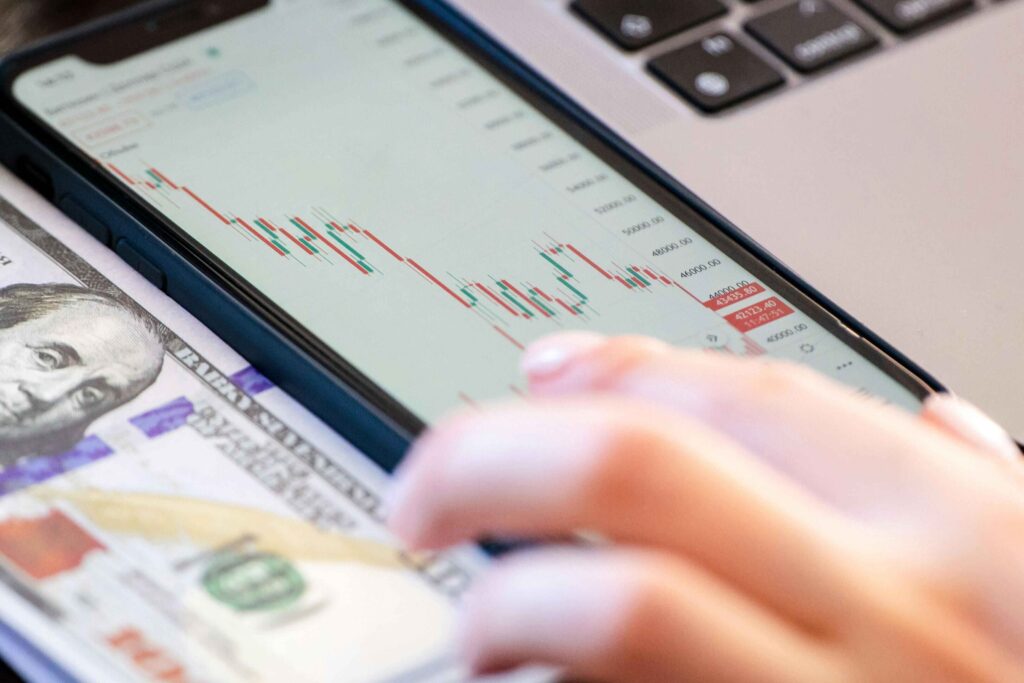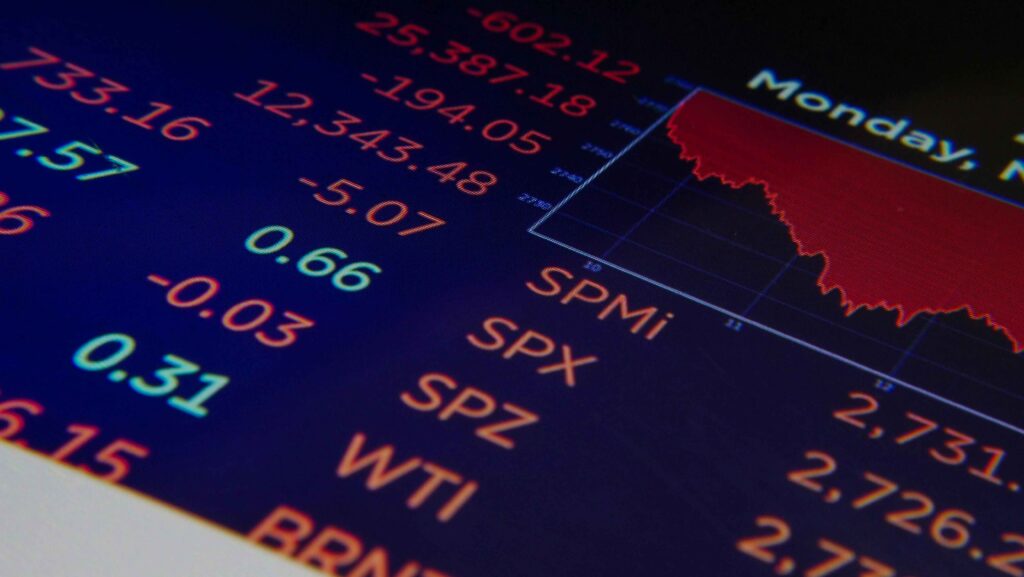Technical Analysis

Technical analysis is a methodology used by traders and investors to evaluate and forecast future price movements in financial markets by analyzing historical price data and market statistics. Unlike fundamental analysis, which focuses on a company’s financial health, technical analysis is primarily concerned with price patterns, trading volume, and other market indicators. Here’s a comprehensive overview:
Core Concepts of Technical Analysis:
1. Price Action:
– The foundation of technical analysis is the belief that all relevant information is already reflected in the price of an asset. By studying past price movements, technical analysts try to predict future price behavior.
2. Charts:
– Line Charts: Simple charts that connect closing prices over a period of time with a continuous line.
– Bar Charts:Display the open, high, low, and close prices for each period (daily, weekly, etc.). – **Candlestick Charts:** Similar to bar charts but with colored bodies that make it easier to visualize price movements. Each “candle” represents the open, high, low, and close for a specific period.


Core Concepts of Technical Analysis:
1. Price Action:
– The foundation of technical analysis is the belief that all relevant information is already reflected in the price of an asset. By studying past price movements, technical analysts try to predict future price behavior.
2. Charts:
– Line Charts: Simple charts that connect closing prices over a period of time with a continuous line.
– Bar Charts:Display the open, high, low, and close prices for each period (daily, weekly, etc.). – **Candlestick Charts:** Similar to bar charts but with colored bodies that make it easier to visualize price movements. Each “candle” represents the open, high, low, and close for a specific period.
3. Trends:
– Uptrend: A series of higher highs and higher lows, indicating rising prices.
– Downtrend: A series of lower highs and lower lows, indicating falling prices.
– Sideways Trend (Consolidation):When prices move within a narrow range, showing no clear
direction.
4. Support and Resistance:
– Support: A price level where a downtrend can be expected to pause due to a concentration
of demand.
– Resistance: A price level where an uptrend can be expected to pause due to a concentration
of supply.
5. Volume:
– Volume refers to the number of shares or contracts traded in a security or market during a given
period. High volume often indicates strong interest and can confirm trends.
6. Indicators and Oscillators:
– **Moving Averages (MA):** A tool that smooths out price data to identify trends by calculating
the average price over a specific period. Common types include Simple Moving Average (SMA) and Exponential Moving Average (EMA).
– Relative Strength Index (RSI): An oscillator that measures the speed and change of price movements, typically used to identify overbought or oversold conditions.
– Moving Average Convergence Divergence (MACD):*A trend-following indicator that shows the relationship between two moving averages of a security’s price.
– Bollinger Bands: A volatility indicator that uses standard deviation to plot bands above and
below a moving average. When the bands contract, it suggests low volatility; when they expand, it suggests high volatility.
– Stochastic Oscillator: Measures the momentum of price, comparing a closing price to a range of prices over a specific period, typically used to spot overbought or oversold conditions.
7. Chart Patterns:
– Head and Shoulders: A reversal pattern that can signal the end of an uptrend or downtrend.
– Double Top/Double Bottom: Patterns that suggest a reversal of the current trend.
– Triangles (Symmetrical, Ascending, Descending): Continuation patterns that can signal the
direction of the next major move.
– Flags and Pennants: Short-term continuation patterns that occur after a strong price move.
8. Fibonacci Retracement:
– A tool used to identify potential support and resistance levels based on the key Fibonacci levels
(23.6%, 38.2%, 50%, 61.8%, and 78.6%).
9. Elliott Wave Theory:
– A method that suggests markets move in a series of five waves in the direction of the main
trend, followed by three corrective waves. It is used to forecast future price movements by analyzing these wave patterns.
10. Sentiment Indicators:
– Tools that measure the overall mood of the market participants, such as the Put/Call Ratio or the
Volatility Index (VIX). High sentiment readings can signal that a trend is overextended and may reverse.

Theories and Assumptions:
1. Market Efficiency Hypothesis:
– Technical analysis assumes that markets are not perfectly efficient and that patterns and trends can be identified and used to predict future price movements.
2. History Tends to Repeat Itself:
– The idea that historical price patterns and trends tend to repeat over time due to the collective psychology of market participants.
3. Price Discounts Everything:
– Technical analysts believe that all known information (fundamental, political, psychological, etc.) is already reflected in the price of an asset.
Types of Technical Analysis:
1. Trend Following:
– Strategies that aim to capitalize on the ongoing direction of the market, such as using moving averages to identify the trend.
2. Contrarian:
– Strategies that go against prevailing market trends, often based on the assumption that trends will reverse.


Types of Technical Analysis:
1. Trend Following:
– Strategies that aim to capitalize on the ongoing direction of the market, such as using moving averages to identify the trend.
2. Contrarian:
– Strategies that go against prevailing market trends, often based on the assumption that trends will reverse.
3. Mean Reversion:
– Strategies that assume prices will revert to their historical average, used in trading ranges or
overbought/oversold conditions.
4. Momentum Trading:
– Strategies that capitalize on the speed and strength of a trend, often using indicators like RSI or
MACD to identify strong movements.

Criticism and Limitations:
1.Self-Fulfilling Prophecy:
– Some critics argue that technical analysis can become a self-fulfilling prophecy, where many
traders acting on the same signals cause the predicted movement to happen.
2. Past Performance Not Indicative of Future Results:
– The major limitation is that historical price data may not always predict future performance,
especially in the face of new, unpredictable events.
3. Subjectivity:
– Technical analysis can be subjective, with different analysts interpreting the same charts and
indicators in different ways.
4. Overfitting:
– There’s a risk of overfitting when too many indicators or data points are used, leading to
complex models that don’t necessarily improve predictive accuracy.
Practical Application:
Technical analysis is widely used in various markets, including stocks, forex, commodities, and cryptocurrencies. It is often combined with fundamental analysis to enhance decision-making. Day traders and short-term investors commonly rely on technical analysis due to its focus on timing and identifying entry and exit points.
Overall, technical analysis is a powerful tool for traders and investors seeking to understand market dynamics and make informed decisions based on historical price movements and patterns. However, it should be used in conjunction with other methods and a comprehensive understanding of the markets to achieve the best results.


Practical Application:
Technical analysis is widely used in various markets, including stocks, forex, commodities, and cryptocurrencies. It is often combined with fundamental analysis to enhance decision-making. Day traders and short-term investors commonly rely on technical analysis due to its focus on timing and identifying entry and exit points.
Overall, technical analysis is a powerful tool for traders and investors seeking to understand market dynamics and make informed decisions based on historical price movements and patterns. However, it should be used in conjunction with other methods and a comprehensive understanding of the markets to achieve the best results.
Frequently Asked Questions
How does this overall process work?
Our alerts are designed to be simple and straightforward. Here’s how you can start making profitable trades:
Open a Brokerage Account:
– Sign up with a reputable online brokerage (e.g., E-TRADE, Robinhood).
Understand the Signal:
– Read the signal details: stock code, buying price, holding period, and expected profit.
Place the Trade:
– Log into your brokerage account, search for the stock, and place a buy order at the recommended price.
Exit the Trade:
– Sell the stock at the recommended exit point or within the holding period.
Review and Learn:
– Check your results and note what worked for future trades.
Example:
Signal Received:
Stock Code: GRİ
Buying Price: $2.10 – $2.35
Holding Period: 3-7 days
Expected Profit: 10-25%
Steps:
Open: Log into your brokerage account.
Search: Look for stock code “GRİ.”
Buy: Place a limit order to buy at $2.10 – $2.35.
Sell: Place a limit order to sell at the recommended exit price.
Review: Check your profits and learn from the trade.
Is it the right time to invest in stocks?
What happens after I purchase the membership?
Can the number of alerts vary?
Contact Us
Please get in touch if you need any assistance, services, or questions!
- info@ustradeclub.com
